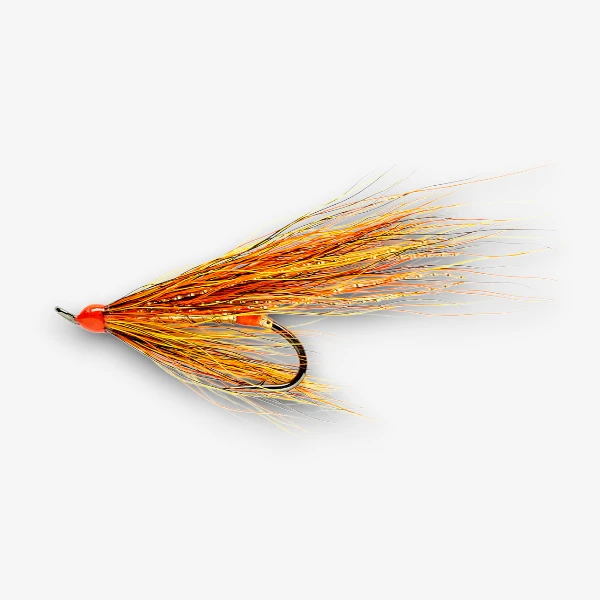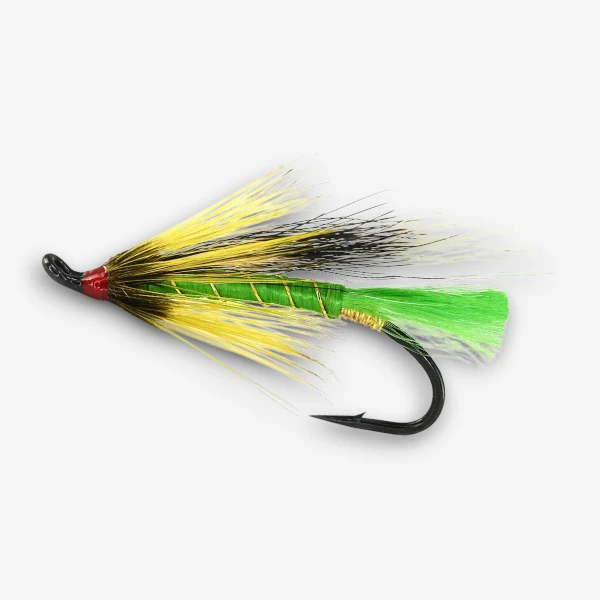Description
The Mickey Finn fly, which originated in Eastern Canada in the late 19th century, has a storied history with multiple name changes. Initially tied by Charles Langevin of Québec, it was first known as the "Langevin." Later, it was sold as the "Red and Yellow Bucktail," highlighting its bright and attention-grabbing color scheme. In 1937, the fly gained popularity in the United States under the name "Assassin," popularized by John Alden Knight of New York. The most well-known name, however, came from Gregory Clark of the Toronto Star newspaper, who renamed the fly the "Mickey Finn" after the infamous knockout drink. This name was inspired by the legend of movie star Rudolph Valentino, who was rumored to have been poisoned with a “Mickey Finn” (a drink laced with a sedative). The fly’s striking red and yellow color combination makes it a highly visible and effective pattern for predatory fish, particularly for species like brook trout, bass, and pike.
Pro Tip
Use in Low-Light Conditions: The bright red and yellow colors of the Mickey Finn make it especially effective in low-light conditions such as dawn, dusk, or overcast days. The fly’s vivid hues can attract fish from a distance, making it ideal when visibility is limited.
Reviews
0
0 Ratings
0 Reviews
Recipe
Hook: Mustad 9671 or Tiemco 7999, size 4-8 Thread: Red or yellow 6/0 Tail: Red and yellow bucktail Body: Red and yellow floss or chenille Ribbing: Fine gold or silver wire (optional) Wing: Red and yellow bucktail or synthetic fibers Hackle: Red or yellow rooster hackle (optional, tied sparsely) Head: Red or yellow thread head


